Papers by Wan Anom Wan Aris
Survey review/Survey review - Directorate of Overseas Surveys, Mar 25, 2024
XVII MEXICAN SYMPOSIUM ON MEDICAL PHYSICS
Survey Review, May 13, 2023
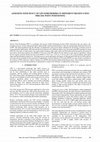
The International Archives of the Photogrammetry, Remote Sensing and Spatial Information Sciences, Feb 7, 2023
Precise Point Positioning (PPP) is a technique that process Global Positioning System (GPS) obser... more Precise Point Positioning (PPP) is a technique that process Global Positioning System (GPS) observation that can achieve subdecimetre accuracy. Precise ephemerides that contain satellite clock and position plays a vital role in minimising orbital and clock error in PPP. This study hypothesize that the efficiency of ephemerides varies across region, influenced by the density of stations involved in generating the ephemerides. GPS observations from stations in five different regions were processed using PPP technique by using RTKLIB. Four types of ephemerides were used namely broadcast, ultra-rapid, rapid, and final ephemerides during the processing of each station. Root-mean-squared error (RMSE) of 3D error of the PPP solution for the stations in each region is quantified. Among the five regions selected, Europe has the lowest RMSE of 155.67 cm, 27.93 cm, 27.38 cm and 27.06 cm for broadcast, ultra-rapid, rapid, and final ephemeris respectively. This high accuracy can be attributed to the density of International GNSS Service (IGS) stations in Europe that are available for the generation of ephemerides. Position Dilution of Precision (PDOP) was also found to contribute to the accuracy of PPP solution in a region, whereby a low PDOP often promises higher positioning accuracy. More regional stations are suggested to be involved in the generation of ephemerides to improve the efficiency of ephemerides in that region.

The International Archives of the Photogrammetry, Remote Sensing and Spatial Information Sciences, Jan 10, 2022
Water uses need to be measured, which is critical for evaluating water stress. The Industry 4.0 v... more Water uses need to be measured, which is critical for evaluating water stress. The Industry 4.0 via the Internet of Things (IoT) and usage of water measurement sensor can provide real-time information on the water flow rate and water pressure, that is crucial for water monitoring and analysis. There is a need for online smart water monitoring that gives out more efficient and sustainable water uses at Universiti Teknologi Malaysia (UTM) campus. A prototype of an online smart water monitoring for UTM, which was developed based on the integration of IoT and Geographical Information System (GIS), consist of four layers; (1) physical layer; (2) network layer; (3) processing layer and, (4) application layer. The findings show that when the water flow increases, the water pressure decreases. When there is no water flow, the lowest value is 52.214 Psi, and the highest value is 60.916 Psi. The latest technology integrating the IoT-GIS for smart water monitoring has shown a very efficient way of providing real-time water parameters information, cost and time effective, and allowing for continuous water consumption analysis via the cloud computing service.

Journal of Applied Geodesy
The study introduces the concept of regional GPS orbit determination, whereby GPS satellite posit... more The study introduces the concept of regional GPS orbit determination, whereby GPS satellite positions are determined using GPS measurements from locally or regional distributed stations. The importance and characteristics of regional GPS orbit are briefly discussed. The technique used to determine the regional GPS satellite position is coined Inverse Single Point Positioning (ISPP). Code-based pseudorange is used and improved using residual correction model. Two designs of station distribution are selected in this study, which only cover stations in Malaysia and stations situated 8000 km from a reference point in Malaysia. The root-mean-squared-error (RMSE) of ISPP when compared against final ephemeris were 660.65 m and 27.61 m, while the 3D RMSE of positioning were 1.612 m and 1.324 m for the first and second designs, respectively, lower than the accuracy of broadcast ephemeris. Three parameters are identified as factors affecting accuracy of ISPP, namely geometry of station distri...
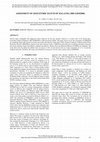
The International Archives of the Photogrammetry, Remote Sensing and Spatial Information Sciences, 2019
Several major earthquakes that happened nearby Malaysia for the past decades resulted in a tecton... more Several major earthquakes that happened nearby Malaysia for the past decades resulted in a tectonic drift of the Sunda plate. Geocentric Datum of Malaysia 2000 (GDM2000) is affected and has shifted. This paper aims to assess the consistency of GDM2000 by computing datum shift caused by tectonic movement and reference frame effect. Daily solution coordinate of Malaysia Real-Time Kinematic Network (MyRTKnet) stations in the latest reference frame i.e ITRF2014 generated and a coordinate discrepancy between the current reference frame and publish coordinate provided by Jabatan Ukur dan Pemetaan Malaysia (JUPEM) are computed. The result shows that the datum has shifted with an average of 34.6 cm and moved with an average orientation of 111.1° toward the southeast direction. Therefore, this study will contribute to giving an overview of the current status of GDM2000.
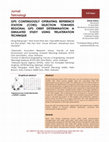
Jurnal Teknologi
Global Positioning System (GPS) orbital error can be minimized using precise satellite orbit. The... more Global Positioning System (GPS) orbital error can be minimized using precise satellite orbit. These precise satellite orbits are calculated using GPS measurements from ground CORS. The distribution of the CORS involved in GPS satellite orbit determination is important, especially in the case of regional GPS orbit determination. A regional GPS orbit is an orbital product generated using locally distributed CORS network and is expected to improve the GPS measurement in the region. Satellite Position Dilution of Precision (SPDOP) is proposed as an indicator to measure the geometry of the CORS with respect to the GPS satellite. GPS measurements are simulated by calculating the range from GPS satellites to the CORS. The simulated measurement is then used to calculate the position of GPS satellite using trilateration algorithm. Results shows the SPDOP has a linear relationship with orbit determination accuracy. This study shows that SPDOP can be used as an indicator for a better CORS sele...
Pure and Applied Geophysics
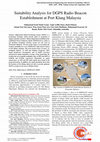
International Journal of Engineering and Advanced Technology, 2019
Differential Global Positioning System (DGPS) is a positioning technique which provide safety in ... more Differential Global Positioning System (DGPS) is a positioning technique which provide safety in navigation to support maritime activities. Marine Department of Malaysia has established Sistem Pelayaran Satelit (SISPELSAT) as safety to aid maritime navigation activities system over the coast of Peninsular Malaysia. The aim of this study is to investigate the location suitability for a new SISPELSAT radio beacon station at Port Klang, Selangor. The work involves three (3) parts; (1) multipath analysis, (2) GPS and Medium Frequency (MF) signal interference investigation, and (3) DGPS correction transmission signal simulation coverage. It has found that, the location has an acceptable multipath value of MP1 and MP2 at 0.4097m and 0.3654m respectively. Meanwhile, no signal interferences on GPS and MF radio signals have found at the proposed location. In addition, the signal simulation shows that the location of Port Klang station are able to provide optimum DGPS coverage for the area of...
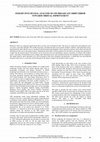
The International Archives of the Photogrammetry, Remote Sensing and Spatial Information Sciences, 2022
Broadcast orbits are compared against final orbit to get the error of broadcast orbit. The errors... more Broadcast orbits are compared against final orbit to get the error of broadcast orbit. The errors are analysed by presenting the error over space, especially longitude. The satellite trajectory is divided into three sector namely northern, southern, and transitional sectors. Spatial analysis show that the error is correlated with the latitude and longitude. Some consistency pattern can be observed from the distribution of the error in the spatial analysis. Standard deviation (SD) is used to quantify the consistency, providing more quantitative insights into the spatial analysis. Four patterns can be observed in the error distribution, namely consistency in northern and southern sector, consistency of transitional sector, changes after transitional sector, and correlation between ∆X component and ∆Y component. The spatial analysis shows potential to be used in broadcast orbit error estimation and prediction. A model that uses this predicted broadcast orbit error as a correction will be designed in the future to improve the broadcast orbit accuracy.
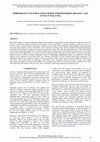
The International Archives of the Photogrammetry, Remote Sensing and Spatial Information Sciences, 2022
Bursa-Wolf model is a common mathematical approach for coordinate transformation practice between... more Bursa-Wolf model is a common mathematical approach for coordinate transformation practice between two reference frames. For the case of deforming region, the existing reference frame has been experiencing a non-linear shifting over the time due to coseismic and post seismic occurrences. Imprecise coordinate in the reference frame definition could degrading critical positioning, surveying, and navigation activities. This require a new realization of reference frame and the coordinate transformation linkage is suggested to be developed in relating the new and existing reference frame. This study provides performance of Bursa-Wolf model as coordinate transformation approach for a deforming region that is experiencing non-linear shifting due to the co-seismic and postseismic events. TLhe Bursa-Wolf were generated from 32 dependent Global Positioning System (GPS) Continuously Operating Reference Stations (CORS) in Malaysia meanwhile another 20 independent neighbouring stations were utilized for assessment purposes. Seven parameters (7p) of Bursa-Wolf were estimated with RMS at ±4.5mm, ±9.2mm and ±2.1mm respectively. The independent stations were classified as internal and external assessment station and the root mean square (RMS) were found at less than 10mm. The internal station has depicted a better RMS in each component which are ±5.1mm, ±6.5mm and ±1.5mm respectively. Meanwhile for external stations RMS in each component are ±6.1mm, ±8.7mm and ±3.5mm respectively. The result shows that Bursa-Wolf model is sufficient to be used as coordinate transformation approach for deforming region.

The International Archives of the Photogrammetry, Remote Sensing and Spatial Information Sciences, 2022
Once the unknown integer ambiguity values are resolved, the GPS carrier phase observation will be... more Once the unknown integer ambiguity values are resolved, the GPS carrier phase observation will be transformed into a millimeterlevel precision measurement. However, GPS observation are prone to a variety of errors, making it a biased measurement. There are two components in identifying integer ambiguities: estimation and validation. The estimation procedure aims to determine the ambiguity's integer values, and the validation step checks whether the estimated integer value is acceptable. Even though the theory and procedures for ambiguity estimates are well known, the topic of ambiguity validation is still being researched. The dependability of computed coordinates will be reduced if a false fixed solution emerges from an incorrectly estimated ambiguity integer value. In this study, the reliability of the fixed solution obtained by using several base stations in GPS positioning was investigated, and the coordinates received from these bases were compared. In a conclusion, quality control measures such as employing several base stations will improve the carrier phase measurement's accuracy.
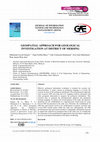
Journal of Information System and Technology Management, 2021
Effective geological information evaluation is essential for accurate site characterization. A ma... more Effective geological information evaluation is essential for accurate site characterization. A major concern in geological mapping is to locate the accurate location of the geological information. The geoinformation approach such as precise GPS surveying and UAV mapping could be integrated with other geospatial information to augment the geological information. This research aims to integrate the geoinformation approach into geological structure mapping. To achieve the overall purpose of the study, the objective identified was the establishment of a high-precision control point by using Precise GPS measurement in the study area. Therefore, the establishment of GPS data observations involves the establishment of primary networks and several GPS controls points within the study area. Subsequently, the GPS positioning has been processed to produce a topographic information map and to support the collection of geological data in the study area. It is hoped that the integration of the ge...
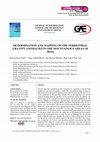
Journal of Information System and Technology Management, 2021
Gravity data and computing gravity anomalies are regarded as vital for both geophysics and physic... more Gravity data and computing gravity anomalies are regarded as vital for both geophysics and physical geodesy fields. The mountainous areas of Iraq are characterized by the lack of regional gravity data because gravity surveys are rarely performed in the past four decades due to the Iraq-Iran war and the internal unstable political situation of this particular region. In addition, the formal map of the available terrestrial gravity which was published by the French Database of Bureau Gravimetrique International (International Gravimetric Bureau-in English) (BGI), introduces Iraq and the study area as a remote area and in white color because of the unavailability of gravity data. However, a dense and local (not regional) gravity data is available which was conducted by geophysics researchers 13 years ago. Therefore, the regional gravity survey of 160 gravity points was performed by the authors at an average 11 km apart, which was covers the whole area of Sulaymaniyah Governorate (part ...
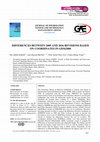
Journal of Information System and Technology Management, 2021
The Geocentric Datum of Malaysia (GDM200) is realised with respect to International Terrestrial R... more The Geocentric Datum of Malaysia (GDM200) is realised with respect to International Terrestrial Reference Frame (ITRF) 2000 at epoch 2nd January 2000. In comparison with the 2000 frame, ITRF2014 has significant improvement in terms of its definition and realisation. Moreover, several great earthquakes that struck the Indonesian region for the past decades have deformed the tectonic plate, resulting in a shifted GDM2000. These earthquakes, followed by post-seismic activities, has caused GDM2000 to become obsolete. Following that, the Department of Survey and Mapping Malaysia (DSMM) has taken the initiative to revise the coordinate of Malaysia Real-Time Kinematic Global Navigation Satellite Systems (GNSS) Network (MyRTKnet) stations in GDM2000 into a new set of coordinates. Therefore, this paper presents an effort to analyse the differences between coordinates in GDM2000 based on 2009 and 2016 revisions. In order to measure the discrepancy, forty-seven (47) MyRTKnet stations in Penins...
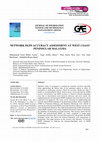
Journal of Information System and Technology Management, 2021
Maritime safety of navigation is essential for maritime activities especially when approaching th... more Maritime safety of navigation is essential for maritime activities especially when approaching the harbor. One of the important aspects in safety of navigation is positioning accuracy which the accuracy should less than 5 meters as recommended by IALA. Such accuracy can be provided by DGPS services. Nevertheless, the DGPS accuracy is bound to distance-dependent error due to uncorrelated errors between reference and rover station. By implementing the network-based DGPS technique, this issue however can be expected to be improved. This issue can be overcome by implementing the network-based DGPS technique to the positioning method. Hence, multiple of CORS in Peninsular Malaysia and Sumatran Indonesian were utilized to generate the network-based DGPS corrections based on LIM to cover the west coast of Peninsular Malaysia. The single point positioning, DGPS and network-based DGPS solutions were being compared with known points to determine the reliability of positioning in marine activi...
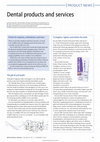
Journal of Information System and Technology Management, 2021
The concept of N-RTK positioning has been extensively developed in order to better model the dist... more The concept of N-RTK positioning has been extensively developed in order to better model the distance-dependent errors of GPS carrier-phase measurements. These errors can be separated into a frequency-dependent or dispersive component (i.e., the ionospheric delay) and a non-dispersive component (i.e., the tropospheric delay and orbit biases) to express the network correction in order to attain better modelling of GPS distance dependent errors. However, the N-RTK performance may degrades due to severe atmospheric irregularities that would seriously affect the modelling of the GPS distance-dependent errors, thus affecting the quality of network correction generation. The development of integrity monitoring for network correction would be great idea to identify the quality and reliability of network correction data dissemination. Therefore, this paper aims to estimates the trend of GPS dispersive and non-dispersive network correction to supports future development of integrity monitori...
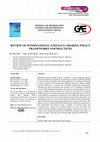
Journal of Information System and Technology Management, 2021
Global Navigation Satellite Systems, or GNSS, is a space technology that has become an important ... more Global Navigation Satellite Systems, or GNSS, is a space technology that has become an important component of positioning, navigation, and timing (PNT) in a broad variety of military and civilian applications. Accordingly, the GNSS is being supported with Continuously Operating Reference Station (CORS) networks which are a common type of GNSS ground-based augmentation infrastructure that governments and industry use to distribute centimetre accurate PNT information throughout the nation or region. In Malaysia, there are few CORS networks currently in services. It was difficult to integrate CORS networks even within the country since the CORS operating came from several different organizations. Furthermore, the CORS data sharing between the public and private sectors in providing precise positioning applications also challenging issue due to the fact that the data contains sensitive information. The relevant policy document on data sharing in the country is still vague. This paper re...
Journal of Physics: Conference Series, 2019
The availability of GPS (Global Positioning System) provides an alternative technology to seismog... more The availability of GPS (Global Positioning System) provides an alternative technology to seismography to detect earthquakes and detect their epicenters. However, the limited sampling rate and processing errors could potentially reduce the accuracy for estimating the required signal parameters. This paper evaluates the methods for analysing GPS derived seismic signals from the 2004 Sumatra Andaman Earthquake based on their timerepresentation, power spectrum and time-frequency representation. Between the three representations, the parameters of the earthquake signals such as P-wave and S-wave are clearly represented on the time-frequency representation.

Uploads
Papers by Wan Anom Wan Aris